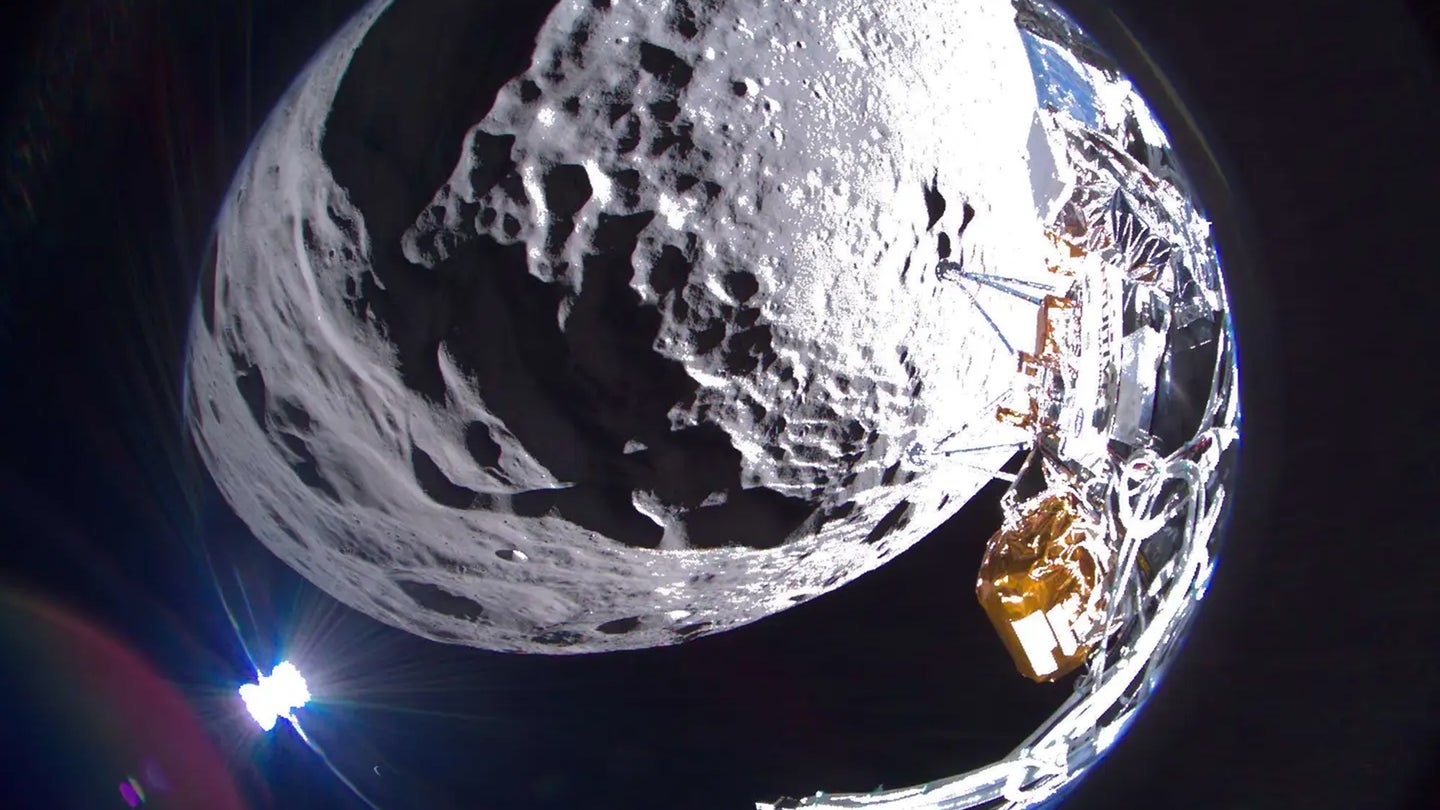
Despite landing on its side and struggling to maintain power, Odysseus, the first US spacecraft to land on the moon in over half a century, is still somewhat operational. Built by the Houston-based company, Intuitive Machines, “Odie” marked a historic return to the lunar surface, and became the first privately funded venture ever to successfully reach the moon.
On Tuesday morning, Intuitive predicted that the spacecraft “may continue up to an additional 10-20 hours.” Yet, mission control plans to put the lander to sleep later tonight. Odie “continues to generate solar power,” said Intuitive Machines co-founder and president Steve Altemus during today’s mission update. Altemus also confirmed that engineers will attempt to revive Odysseus in 2-to-3 weeks following the upcoming lunar night’s conclusion.

“We’ve gotten over 15 megabytes of data,” said CLPS project scientist Sue Lederer when discussing the data the team is retrieving from Odysseus on Wednesday. “We went from basically a cocktail straw of data coming back to a boba tea size straw of data coming back.”
Launched from NASA’s Kennedy Space Center on February 15 aboard a SpaceX Falcon 9 rocket, Odysseus spent the next week traveling 230,000-miles towards the moon—and even documented its journey in the process.
[Related: ‘Odie’ makes space history with successful moon landing.]
For a moment, it seemed as though Odysseus might meet a recent predecessor’s similar fate. Less than a week before the Odysseus launch, the Peregrine lunar lander built by Astrobotics experienced a “critical loss of propellant” on its way to the moon, forcing the private company to abandon its mission.

While circling the moon ahead of last week’s descent, Odysseus ground engineers discovered they failed to turn on the spacecraft’s navigating laser system. As luck would have it, Odysseus housed an experimental NASA laser navigation device intended for testing once it reached its final destination. Mission controllers managed to boot up the laser, which allowed the lander to finish its trip. On February 22, Odysseus arrived close to the Malapert A crater within a mile of its target, approximately 185 miles from the moon’s south pole—but not without a debilitating setback.
While landing, a faster-than-intended descent caused one of its six legs to malfunction and tip Odysseus on its side. According to mission representatives, the resulting position blocked a number of Odie’s antennas, and angled solar panels in a way that limited their ability to draw power. A similar issue plagued yet another recent historic lunar landing mission, when Japan’s SLIM spacecraft arrived to the moon last month intact, if upside down.
[ Related: SLIM lives! Japan’s upside-down lander is online after a brutal lunar night ]
But even if it perfectly stuck the landing, Odysseus would still only have had another two-to-three days of life before powering down as the moon entered its next lunar night. Designers did not intend Odie to survive the harsh, 14.5-day phase that sees temperatures plummet as low as -208 Fahrenheit.
During a February 28 mission update, representatives say NASA Adminstrator Bill Nelson considers Odie’s landing a “success” despite setbacks.
Odysseus contained six NASA experiments (including that aforementioned laser nav system) intended to help plan for future Artemis program missions, a camera designed by university students, a lunar telescope prototype, as well as an art project containing 125 steel sculptures by Jeff Koons. According to Intuitive Machines CEO Steve Altemus, Odysseus tipped so that only the Koons cargo faces downward into the lunar dirt.
This story is developing. We will update this article with more details.
The post Odie the lunar lander is not dead yet appeared first on Popular Science.
Articles may contain affiliate links which enable us to share in the revenue of any purchases made.
from Popular Science https://ift.tt/w0yb3d2




0 Comments